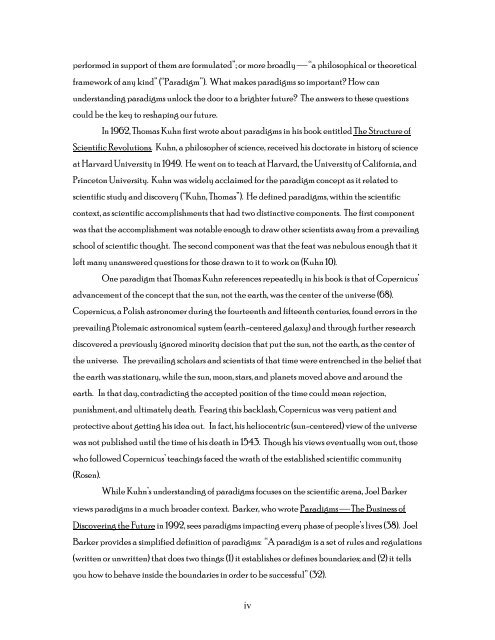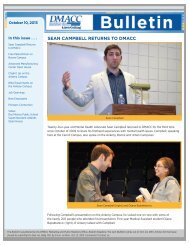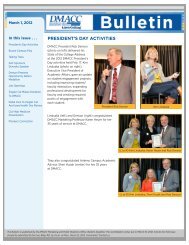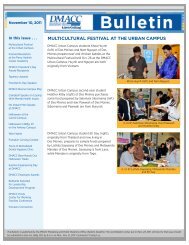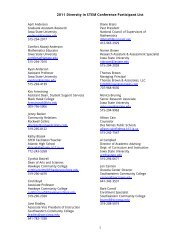The Skunk River Review - DMACC
The Skunk River Review - DMACC
The Skunk River Review - DMACC
Create successful ePaper yourself
Turn your PDF publications into a flip-book with our unique Google optimized e-Paper software.
performed in support of them are formulated”; or more broadly ⎯ “a philosophical or theoretical<br />
framework of any kind” (“Paradigm”). What makes paradigms so important? How can<br />
understanding paradigms unlock the door to a brighter future? <strong>The</strong> answers to these questions<br />
could be the key to reshaping our future.<br />
In 1962, Thomas Kuhn first wrote about paradigms in his book entitled <strong>The</strong> Structure of<br />
Scientific Revolutions. Kuhn, a philosopher of science, received his doctorate in history of science<br />
at Harvard University in 1949. He went on to teach at Harvard, the University of California, and<br />
Princeton University. Kuhn was widely acclaimed for the paradigm concept as it related to<br />
scientific study and discovery (“Kuhn, Thomas”). He defined paradigms, within the scientific<br />
context, as scientific accomplishments that had two distinctive components. <strong>The</strong> first component<br />
was that the accomplishment was notable enough to draw other scientists away from a prevailing<br />
school of scientific thought. <strong>The</strong> second component was that the feat was nebulous enough that it<br />
left many unanswered questions for those drawn to it to work on (Kuhn 10).<br />
One paradigm that Thomas Kuhn references repeatedly in his book is that of Copernicus’<br />
advancement of the concept that the sun, not the earth, was the center of the universe (68).<br />
Copernicus, a Polish astronomer during the fourteenth and fifteenth centuries, found errors in the<br />
prevailing Ptolemaic astronomical system (earth-centered galaxy) and through further research<br />
discovered a previously ignored minority decision that put the sun, not the earth, as the center of<br />
the universe. <strong>The</strong> prevailing scholars and scientists of that time were entrenched in the belief that<br />
the earth was stationary, while the sun, moon, stars, and planets moved above and around the<br />
earth. In that day, contradicting the accepted position of the time could mean rejection,<br />
punishment, and ultimately death. Fearing this backlash, Copernicus was very patient and<br />
protective about getting his idea out. In fact, his heliocentric (sun-centered) view of the universe<br />
was not published until the time of his death in 1543. Though his views eventually won out, those<br />
who followed Copernicus’ teachings faced the wrath of the established scientific community<br />
(Rosen).<br />
While Kuhn’s understanding of paradigms focuses on the scientific arena, Joel Barker<br />
views paradigms in a much broader context. Barker, who wrote Paradigms ⎯ <strong>The</strong> Business of<br />
Discovering the Future in 1992, sees paradigms impacting every phase of people’s lives (38). Joel<br />
Barker provides a simplified definition of paradigms: “A paradigm is a set of rules and regulations<br />
(written or unwritten) that does two things: (1) it establishes or defines boundaries; and (2) it tells<br />
you how to behave inside the boundaries in order to be successful” (32).<br />
iv


